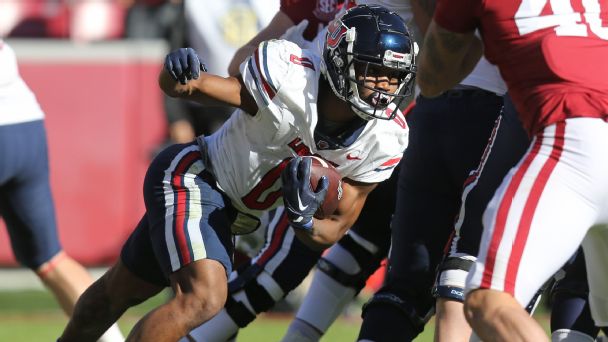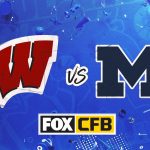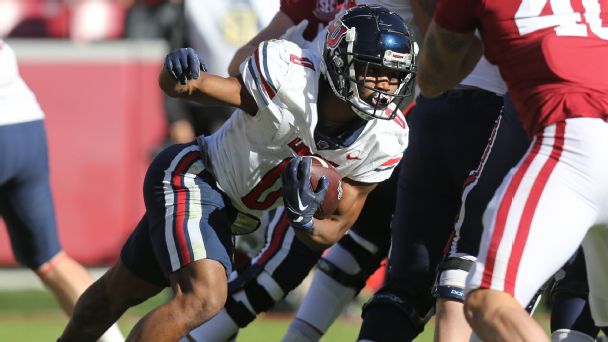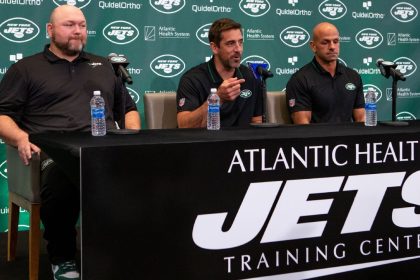
Over the course of the 1970s and 1980s, the NCAA’s biggest schools spent years wrangling and arguing, primarily over television revenue, how much of it the more football-obsessed schools could make, and whether said schools could break apart from the riff-raff to some degree. Time is a flat circle in that regard.
Eventually, Division I split into 1-A and 1-AA (now FBS and FCS) for football, and from a peak of 145 teams in 1977, 1-A’s membership had nearly sunk to double digits by the late 1980s.
That number soon started to rise again, however. It was back up to 111 by 1996, when Boise State, Idaho, UAB and UCF all joined (or rejoined) the fray. It was 120 by 2009, then 130 by 2017. Even in an era in which writers and school administrators both talk about power-conference football programs breaking away from the pack — as they did 40 years ago — said membership continues to climb.
James Madison made it 131 teams last fall and did so in rousing fashion, going 8-3 in a tough Sun Belt right out of the gate. Now we stand at a frisky 133, welcoming Sam Houston and Jacksonville State to the FBS party. Next fall, Kennesaw State, aka No. 134, joins as well. Get the WAC/A-Sun up here, and we’ll be back to 145 in no time! The more, the merrier!
It makes sense to start the 2023 college football season preview with the newbies, doesn’t it? Both Rich Rodriguez’s JSU Gamecocks and KC Keeler’s SHSU Bearkats join a Conference USA in transition; after watching six of its programs leave for the American Athletic Conference (which itself lost three teams to the Big 12), C-USA added two FBS newcomers and two former independents in Liberty and New Mexico State. That makes 29 of 133 current FBS teams — nearly one quarter of them! — who have at least briefly resided in Conference USA. What a world we live in.
The four newcomers will go up against five incumbents (Florida International, Louisiana Tech, Middle Tennessee, UTEP and Western Kentucky) this fall. In this two-part preview, we’ll talk about the new schools this week and the holdovers next week.
Vacation’s over! It’s time to prep for 2023!
Every week through the offseason, Bill Connelly will preview another division or conference from the Group of 5 and Power 5 exclusively for ESPN+, ultimately including all 133 FBS teams. The previews will include 2022 breakdowns, 2023 previews and burning questions for each team.
2022 recap
These four teams traveled drastically different journeys in 2022.
Liberty began the season 7-1 with rousing, potentially program-altering wins over BYU and Arkansas back to back. But with rumors of coach Hugh Freeze’s impending departure swirling, the Flames suffered narrow losses to UConn and Virginia Tech, then took a shocking, 35-point home defeat to New Mexico State. Freeze indeed left for Auburn, and Liberty lost a tight bowl game against Toledo to finish 8-5.
NMSU was surging as Liberty fell apart. The Aggies began Jerry Kill’s first year at the helm with a 1-5 record and a sketchy 21-7 loss to FIU. But from there, they won five of six, earning only their second bowl bid in 62 years and winning it, taking down Bowling Green 24-19 in the Quick Lane Bowl to finish 7-6.
The postseason wasn’t an option for Jacksonville State or Sam Houston as they transitioned from FCS to FBS, but they too trended in different directions. After going an incredible 21-1 in 2021’s two FCS seasons (spring and fall), Sam Houston labored through 2022, scoring less than 20 points in five of nine games and going just 5-4. JSU did the opposite: After going 5-6 in 2021, the Gamecocks handed the reins to Rodriguez and ignited, scoring at least 34 points in nine games on the way to a 9-2 record.
Now these four teams, from four states and three time zones, join the same conference. Conference USA is really leaning into the USA part of the title.
2023 projections
Jamey Chadwell takes over at Liberty, and the Flames start out as one of the conference’s two primary favorites. A massive load of tightly projected games will determine whether NMSU can bowl again, and despite the example that James Madison set last season, SHSU (because of offense) and JSU (because of defense) are facing uphill battles to finish above .500.
Burning questions
How long will it take Jamey Chadwell to build Coastal Carolina North? Ignore the specifics, and it sure seems like Jamey Chadwell should have gotten a power-conference head coaching job before now. He took teams to the quarterfinals of both the Division II and FCS playoffs, and after landing at Coastal Carolina, he went 31-6 with the Chanticleers from 2020 to 2022. His last three Coastal teams all ranked 36th or better in offensive SP+.
The specifics matter, though. His time at Charleston Southern produced a handful of NCAA sanctions. But perhaps more importantly to athletic directors, that great offense is … gasp … kind of weird. It’s based on an intensely unique combination of option principles, downhill running and devastating play-action looks, and as we’ve seen in recent years, the word “option” is generally anathema to power-conference athletic directors with head coaching vacancies. So, too, is a level of loyalty to assistant coaches who know his system; he appears to choose said system over big-time recruiting prowess, which has likely held him back when it comes to the pursuit of higher-level jobs.
With a cycle ending at Coastal — translation: Lots of players were departing, and regression was likely in 2023 — Chadwell chose to make a move. He takes over a Liberty program that, in terms of money and resources, appears positioned to do extremely well long term in Conference USA. The Flames won 34 games over four seasons with Freeze, the school has proven willing to spend at a very high level for a Group of 5 team. The school has been carrying itself like a top-50ish program for a while and will quite possibly perform like one eventually under Chadwell.
It’s hard to get a read on how his first team might perform, though. There’s just enough upside to expect big things and just enough change to provide pause. His offense, so successfully piloted by Grayson McCall in recent years, will still feature co-coordinators Willy Korn and Newland Isaac, but the quarterback will be either one of two decent but unspectacular incumbents (Johnathan Bennett, who was 107th in Total QBR, or Kaidon Salter) or Trey Lowe, a more high-risk, high-reward transfer from Southern Miss.
The receiving corps features big-play options in CJ Daniels and Noah Frith, and the line returns three starters and adds West Virginia guard Jordan White. Perhaps most importantly, Chadwell should have the backs he needs. Dae Dae Hunter averaged 6.6 yards per carry and was on his way to a 1,000-yard season before it was derailed by injury. Between veteran Shedro Louis and Wake Forest transfer Quinton Cooley, a capable backup should emerge too. It may take a bit to figure out the best option at quarterback, but the upside should show quite a bit in 2023.
The defense is more of a mystery. The Flames have ranked in the defensive SP+ top 60 for three straight years but must replace seven starters. They might have been Liberty’s seven best playmakers, too. Defensive end Durrell Johnson and linebacker Ahmad Walker combined for 41 tackles for loss and 34 run stops; their production is all but impossible to replace. The lineup should be loaded with juniors and seniors but light in proven disruptors beyond defensive tackle Kendy Charles and corner Daijahn Anthony. The special teams unit was a bit of a liability in 2022 but returns a strong return man in Louis.
There are quite a few tossups on Liberty’s schedule, but the Flames are only projected underdogs in one game (at Western Kentucky on Oct. 24). That says good things about their conference title chances.
How far can Mr. Fix-It take NMSU? Sure, the Aggies got in on a technicality. After going 5-6 in 2022 and having their game with San Jose State canceled after an SJSU player’s death, New Mexico State got an NCAA waiver to play a 12th game against a second FCS opponent (and, in Valparaiso, a bad one at that) and have it count toward bowl eligibility.
Maybe they would have beaten SJSU all the same — they were supposed to play right around the point where the Aggies turned their season around — but whatever. They got a chance to bowl and took full advantage of it. In the Quick Lane Bowl in Detroit, the Aggies took a 17-0 lead over Bowling Green early in the third quarter, then survived a late comeback attempt by converting four third-down attempts (three via scrambles from quarterback Diego Pavia) and eating up the last 6:27 of the clock on their final drive.
Even without the bowl, Jerry Kill had already enjoyed the best debut season for an New Mexico State football coach since Jim Wood went 5-5 in 1968. This is what Kill does. He won at Saginaw Valley State. He took Southern Illinois from 1-10 to 10-2 in two years. He took Northern Illinois from 6-7 to 10-3 in two years. He inherited a 3-9 Minnesota team and had them bowling in year two. Health problems — most notably, seizures — have derailed his career at times, but a lack of success hasn’t. He’ll turn 62 in August, and he hasn’t wasted time with his fix-it routine in Las Cruces.
His Aggies should get plenty of experience in close games this fall. SP+ projects eight NMSU games to have a scoring margin between 3.0 and 6.1 points. If they’re a little better than projected (or they get some close-game luck), a 7-6 or even 8-5 record is on the table. If they’re a little worse, they could go 3-10. Regardless, there’s program momentum here. Kill brought in a number of power-conference transfers, including former four-star quarterback Eli Stowers from Texas A&M, and his Aggies should again be pretty fun to watch.
The offense boasts a scrambler-gambler quarterback in Pavia and most of last year’s all-or-nothing receiving corps, and while the defense loses a quartet of awesome linebackers, most of the line (including tackle Izaiah Reed) and secondary (including aggressive corner Syrus Dumas) return. The Aggies might need some breaks to get back to another bowl, but they should be competitive and exciting all the same. These are not things we usually say about NMSU football, and it’s pretty damn cool to be able to say them.
Can we combine Jacksonville State’s offense with Sam Houston’s defense? Rich Rodriguez offenses still score points. One of the most influential coaches in the spread offense revolution of the 1990s and 2000s, Rodriguez was offensive coordinator at Clemson when Woody Dantzler became the first quarterback to throw for 2,000 yards and rush for 1,000 in the same season in 2001. He nearly parlayed Pat White and Steve Slaton into a BCS championship game bid at West Virginia. He’s won 172 career games as a head coach, and he went 9-2 in his Jacksonville State debut last season.
Both last year’s starting quarterback (Zion Webb) and backup (Aaron McLaughlin) are gone, which is suboptimal when moving up a level. But with backs Anwar Lewis (7.1 yards per carry) and Louisiana-Monroe transfer Malik Jackson (who caught fire late in 2021 under Rodriguez) in the backfield and four returning starters on the line, the Gamecocks should be able to run the ball well whether it’s redshirt freshman Te’Sean Smoot or a true freshman (Earl Woods III or Caden Creel) taking snaps. If there’s any oomph whatsoever in the passing game, a top-100 performance is possible.
The Sam Houston defense might have an even higher ceiling than that. The Bearkats allowed just 19.5 points per game and 4.7 yards per play against FCS opponents in 2022, and they return FBS-ready disruptors in linebackers Kavian Gaither and Jaylen Phillips. The secondary is experienced, and while the line took a hit, losing its top three tacklers (including outstanding rush end Toby Ndukwe), KC Keeler brought in a pair of solid transfers in New Mexico’s Jaden Phillips and Georgia State’s Akeem Smith. Throw in former TCU defensive end Chris Murray and three-star JUCO end Nate White, and there appears to be upside up front.
So that’s two of four FBS-ready units for these new FBS teams. The other two? We’ll see. Last season, three Sam Houston quarterbacks combined for one of the worst passing lines you’ll see in the 2020s: 45% completion rate, 11.1 yards per completion, 6 touchdowns to 10 interceptions. They are all scheduled to return, including Keegan Shoemaker, the most successful (or maybe least unsuccessful) passer of the bunch, and Washington State transfer Xavier Ward joins the fray as well. But there’s not much of a track record here, and Cody Chrest, the only receiver with more than 16 catches last year, is gone too. All three of last year’s QBs were good runners, and running back Zach Hrbacek averaged 5.8 yards per carry, so there’s potential in the run game despite the loss of three starting linemen. But the passing game was dreadful last we saw it.
The Jacksonville State defense is a bit more proven, at least up front. Ends Chris Hardie and Jaylen “J-Rock” Swain combined for 25.5 TFLs and 10.5 sacks last season, and Rodriguez hit the JUCO ranks pretty hard to assure that the Gamecocks have the requisite line depth. But both the linebacking corps and secondary have been hit by attrition, losing six of their 10 players with 30-plus tackles. Nickelback Kolbi Fuqua is a keeper, and Rodriguez loaded up on JUCOs here too, but there are questions to answer.
James Madison set the bar pretty high for FBS newcomers last year, and while the Dukes had one of the two most proven FCS programs on the planet, JSU and especially SHSU have had plenty of excellent recent moments at that level. But they have a few more holes to fill than JMU did, and if either reaches .500 this fall, that’ll be a heck of an accomplishment.
My 10 favorite players
QB Diego Pavia, NMSU. He went 4-1 as an Aggie starter in 2022, and his 90.2 Total QBR rating (which is opponent-adjusted) after Oct. 1 led the nation. He scrambles a lot (12% of dropbacks) and does it well (9.1 yards per scramble), and while that gets him hit quite a bit, he’s great fun to watch.
RB Dae Dae Hunter, Liberty. The Hawai’i transfer lived up to expectations last fall, and then some. He rushed for 213 yards in the Flames’ blowout of BYU, he averaged 6.6 yards per carry, and he caught at least two passes in five games before an injury against Arkansas cost him the last five games of the season. The Chadwell offense should fit him like a glove.
RB Anwar Lewis, JSU. The JUCO transfer was an immediate hit in the RichRod offense, rushing for 818 yards (7.1 per carry) and eight touchdowns and catching 13 balls with another score as well. He’s got big-play potential, even in a higher subdivision.
WR CJ Daniels, Liberty. Daniels came up big in 2021, his second freshman season, averaging 17 yards per catch with seven touchdowns and a pair of 100-yard receiving games. He tore his ACL last spring and barely played in 2022, but he should be a full-strength play-action terror again this fall.
RG Brendan Schlittler, Liberty. A 315-pounder from Eureka, Missouri, Schlittler suffered just a 0.6% blown run-block rate (about as low as you’ll ever see for a guard) and committed only three penalties in 13 games. He’s an all-conference contender in his first year in a conference.
DE Chris Hardie, JSU. Hardie and J-Rock Swain boast both muscle (260 and 255 pounds, respectively, even if Swain’s weight comes on a 5-foot-10 frame) and speed. The 6-foot-2 Hardie was particularly disruptive last year, leading the team with both 15.5 TFLs and 5.5 sacks.
DT Kendy Charles, Liberty. There are huge shoes to fill on the Liberty D-line, but the 6-foot, 275-pound Charles should remain a handful. He was good against both run (11 run stops) and pass (5.5 sacks) and played his best ball down the stretch, even if Liberty didn’t.
LBs Kavian Gaither and Jaylen Phillips, SHSU. We’ll see how well the Bearkats’ line holds up after decent turnover, but in this pair of juniors, they’ve got two stalwarts to clean up messes. They combined for 17 TFLs (12 from Gaither), four sacks and four passes defensed, and Gaither was a Buck Buchanan Award finalist for the best defensive player in FCS.
CB Syrus Dumas, NMSU. The senior from Columbus, Mississippi (via Independence CC) was a star corner and safety simultaneously, allowing a paltry 19.1 QBR with two picks in coverage and also racking up 4.5 TFLs and seven run stuffs.
Anniversaries
In 1993, 30 years ago, Rich Rodriguez’s offense ignited. The 59-year old is always self-deprecating when he’s talking about how some of his most famous innovations came about long ago at Glenville State. “We had a shorter quarterback, and I thought I could get five dumpy linemen who could get run over slowly,” he told me years ago when describing why he started using wide offensive line splits. He came up with the idea of the zone read when his quarterback ran the wrong play in practice and wrong-footed the hell out of the defensive end in the process. And he began using extreme tempo because he hated defending that in college and, as he put it, “What have we got to lose? We’ve got 500 people in the stands, and I’m related to 490 of them.”
Regardless of how it all happened, Rodriguez took the Pioneers to the NAIA national title game in 1993 with all of these accidents and experiments and parlayed that into offensive coordinator gigs at Clemson and Tulane, then head coaching gigs at West Virginia, Michigan and Arizona. Now he’s at JSU, and still running wide splits and zone reads.
In 2008, 15 years ago, the Hal Mumme experiment ended in Las Cruces. It seemed like a perfectly logical fit at first, a unique coach — one who spent two college years at New Mexico Military Institute, no less — plying his trade in a unique location. But despite winning at Iowa Wesleyan, Valdosta State, Southeastern Louisiana and, ever so briefly, Kentucky, Mumme could never quite get his air raid offense in tune in Las Cruces. In 2008, his fourth season, the Aggies averaged 31.6 points per game during an exciting 3-2 start, but they lost their last seven games by an average score of 35-15, and Mumme’s tenure ended with an 11-38 record.
In 2013, 10 years ago, KC Keeler worked with Sal Paolantonio. A break year can take you to interesting places. After an 11-year run at Delaware, which included an FCS national title in 2003 and two other title game appearances, Keeler was fired after a 5-6 campaign in 2012. He would replace Willie Fritz at Sam Houston in 2014 and win 46 games (with three semifinal appearances) in four years right out of the gate before winning the national title in spring 2021. In 2013, however, he took a detour. He called games for ESPN3 and worked as a content producer for ESPN’s “NFL Matchup,” with analysts including Ron Jaworski, Sal Paolantonio and Merril Hoge. Talking about scheme and concepts with Jaworski & Co. apparently got the creative juices flowing.
In 2018, five years ago, the FBS experiment began at Liberty. Granted, JMU’s immediate surge skewed the typical timetable for success in the FCS-to-FBS transition, but Liberty’s story is a pretty successful one too. After years of mostly marginal success at the NAIA, Division II and FCS levels, Liberty committed to athletic investment in the 2000s, and success quickly followed. The Flames won or shared eight Big South Conference titles between 2007 and 2016, and upset JMU in their first FCS playoff appearance in 2014. And just as they were climbing the powerhouse ladder at that level, they increased the degree of difficulty, not only jumping to FBS but doing so as an independent. It’s gone swimmingly.
Average wins, last five years in FCS (2013-17): 7.0
Average wins, first five years in FBS (2018-21): 8.0
That’s not really the way it’s supposed to work, but that’s how it’s gone in Lynchburg. And now, with conference membership in tow, life gets even easier from a scheduling perspective.










